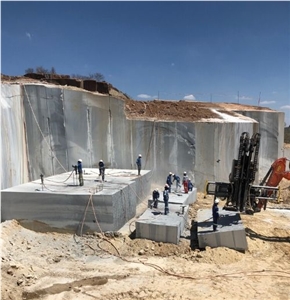Unveiling Granite Quarries in South Africa Tradition: A Journey Through Quarries
Unveiling Granite Quarries in South Africa Tradition: A Journey Through Quarries
Blog Article
Unearthing the Rich History and Sustainable Practices of Granite Quarrying
As we stand on the precipice of discovering the elaborate tapestry of granite quarrying, a trip with time discloses not simply the physical act of extracting rock yet likewise the social and historical importance woven right into the extremely textile of this practice. From the ancient beginnings that laid the structure for modern quarrying methods to the lasting practices that are forming the future of this sector, each sculpt mark on granite surface areas narrates waiting to be uncovered (granite quarries in south africa). The legacy of granite quarrying stretches much past simple removal; it is a testament to human resourcefulness, strength, and the long-lasting appeal of this stunning stone
Ancient Origins of Granite Quarrying
Dating back to ancient civilizations, the technique of quarrying granite has been an integral component of human background and architectural advancement. The earliest proof of granite quarrying days back to ancient Egypt, where huge pyramids and intricate sculptures were crafted from this durable rock. The Egyptians utilized primitive devices to extract granite blocks from quarries, showcasing the relevance of this material in their monumental buildings.
Moving forward in history, the Greeks additionally made substantial payments to the quarrying of granite. The Greeks made use of granite in different building marvels, such as holy places and statuaries, demonstrating their ability in shaping and carving this sturdy stone. The Romans further improved the techniques of quarrying granite, employing sophisticated tools like blades and hammers to essence and shape granite for their renowned frameworks.
Through the centuries, the practice of quarrying granite has advanced, with contemporary technologies improving performance while keeping the ageless allure of this all-natural stone - granite quarries in south africa. From old civilizations to contemporary home builders, the legacy of granite quarrying remains to form our world
Development of Quarrying Strategies
The development of quarrying techniques has been marked by a constant development towards better effectiveness and accuracy in extracting granite. From the rudimentary approaches used by our forefathers to the sophisticated technologies utilized in contemporary quarrying operations, the sector has undertaken substantial improvements. Early quarrying techniques entailed hand-operated labor with basic tools such as knives, hammers, and wedges to remove granite blocks from the earth. As human beings progressed, techniques like fire-setting and primitive dynamites were presented to promote the removal process.
Innovations in computer-controlled devices and 3D modeling have actually optimized quarrying operations, leading to marginal ecological influence and improved site sustainability techniques. As the demand for granite continues to rise, the development of quarrying techniques stays important to meeting industry requires successfully and sustainably.
Social Importance of Granite
Granite holds an extensive cultural relevance across numerous human beings because of its long-lasting existence in architectural work of arts and prized monuments. From the impressive pyramids of Egypt to the detailed carvings of the Angkor Wat holy place in Cambodia, granite has been a material of selection for sharing magnificence and long life in social heritage. In ancient Rome, granite columns decorated holy places and public structures, symbolizing strength and permanence. The social relevance of granite prolongs past its physical qualities; it personifies durability, stability, and timelessness, making it a sign of enduring legacies and traditions.

Lasting Practices in Quarrying
Amidst the rich history of granite quarrying and its cultural relevance lies an expanding emphasis on sustainable methods within the industry. As environmental understanding and problems about resource exhaustion have actually enhanced around the world, the quarrying market has actually progressively accepted sustainable approaches to reduce its effect on the setting and bordering neighborhoods.

Furthermore, improvement and rehab of quarry sites post-extraction are integral to lasting practices. By restoring quarried areas to an all-natural or valuable state, such as developing wildlife environments or entertainment spaces, quarriers her comment is here can offset the ecological footprint of their operations and add favorably to the local ecosystem.
Heritage of Granite Quarrying
With a historical backdrop soaked in craftsmanship and industrial progress, what enduring effect has granite quarrying left on the landscape of contemporary society? The heritage of granite quarrying transcends plain extraction techniques; it has actually shaped architectural wonders, metropolitan landscapes, and social heritage worldwide. The durable nature of granite has made it a favored option for monuments, buildings, and facilities, standing as a testimony to the skill and virtuosity of quarry workers throughout generations.
Additionally, the economic impact of granite quarrying can not be ignored. The market continues to offer job opportunity and drive local economic situations in areas where granite extraction is common. It has actually likewise spurred technological innovations in quarrying methods and tools, leading to a lot more reliable and sustainable methods.
In regards to sustainability, the heritage of granite quarrying consists of efforts to alleviate ecological influences with improvement projects and accountable source administration. By stabilizing financial rate of interests with environmental stewardship, the market aims to ensure that future generations can continue to benefit from this long-lasting natural deposit.
Final Thought

Report this page